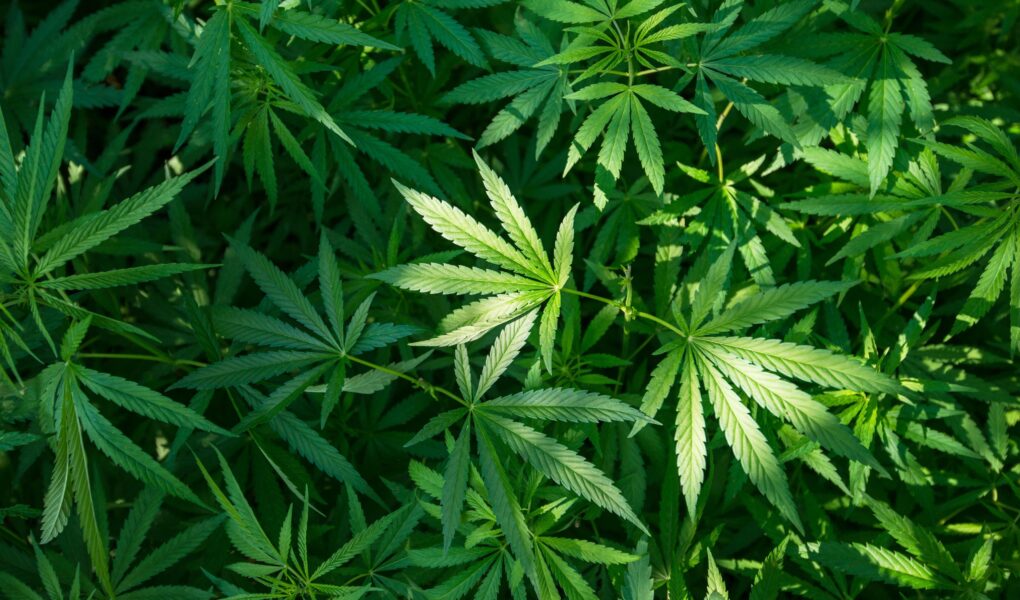The Fine Line: Navigating the Nuances of Marijuana Overdose
As the cultural landscape shifts and perceptions of marijuana evolve, the conversation around its use becomes increasingly complex. What was once relegated to the shadows of stigmatization is now embraced by many as a legitimate form of relaxation, recreation, and even medicinal relief. However, this surge in acceptance often brings with it a lack of understanding about the potential risks associated with cannabis consumption, particularly the phenomenon of marijuana overdose. While tales of overindulgence typically evoke laughter and tales of unintentional escapades, the reality is more nuanced. In this article, we will explore the symptoms, myths, and truths surrounding marijuana overdose, aiming to illuminate the often-overlooked aspects of a substance that, despite its benefits, deserves a thoughtful and informed approach. Join us as we delve into the science, experiences, and misconceptions, encouraging a balanced perspective on a plant that has captured the imagination of many.
Table of Contents
- Understanding the Spectrum of Marijuana Use and Its Effects
- Navigating the Risks: Identifying Signs of Overindulgence
- Practical Strategies for Responsible Consumption
- Support Systems and Resources for Marijuana Users in Need
- Q&A
- In Conclusion
Understanding the Spectrum of Marijuana Use and Its Effects
Marijuana use exists along a broad spectrum, varying from recreational enjoyment to therapeutic applications. Individuals may consume cannabis in several forms, including smoking, vaping, edibles, and tinctures. Each method has distinct effects on the body and mind, influenced by dosage, strain type, and individual tolerance levels. Users often report a range of experiences, from relaxation and euphoria to anxiety and paranoia, underscoring the importance of understanding each person’s unique interaction with marijuana.
Furthermore, the effects of marijuana can be categorized into two primary areas: short-term effects and long-term effects. While short-term effects may include changes in mood, memory, and perception, long-term effects could potentially lead to dependency or impact mental health. The following table outlines some common short-term and long-term effects of marijuana use:
| Short-Term Effects | Long-Term Effects |
|---|---|
| Increased appetite | Dependency |
| Altered perception | Memory impairment |
| Relaxation | Potential mental health issues |
Navigating the Risks: Identifying Signs of Overindulgence
Understanding the subtle yet unmistakable signs that you may be veering into overindulgence can be pivotal in maintaining a balanced lifestyle. One of the key indicators is a significant shift in your daily routine, where engaging with marijuana becomes a priority rather than a choice. You might notice that you’re spending less time on hobbies, social engagements, or even chores that once brought joy or fulfillment. Other telling signs include:
- Increased Tolerance: Needing more to achieve the desired effects.
- Withdrawal Symptoms: Experiencing irritability or mood swings when not using.
- Neglected Responsibilities: Allowing work, relationships, or health to suffer.
Tracking your consumption can also highlight potential overindulgence patterns. Keeping a journal can be beneficial, allowing you to reflect on your usage in the context of your overall well-being. Consider also the impact on your finances and emotional health. Below is a simple table to evaluate your habits:
| Indicator | Agree (Yes/No) | Notes |
|---|---|---|
| Do you often feel the need to use more than before? | ||
| Have you missed work or social events due to usage? | ||
| Do you find it hard to stop once you’ve started? |
Practical Strategies for Responsible Consumption
Adopting responsible consumption practices can enhance your experience while minimizing potential negative impacts. Start by understanding the source and quality of the marijuana you are using. Prioritize products from reputable dispensaries that offer lab testing results to ensure they are free from contaminants and accurately labeled for THC and CBD content. Additionally, consider keeping a consumption journal where you can record the type of strain, dosage, and effects experienced. This not only helps you keep track of your habits but also allows you to make informed decisions based on past experiences.
Another effective strategy is to share your knowledge with others in your community. Engage with local forums or social media groups focused on responsible consumption, where you can exchange tips and resources. More importantly, be mindful of your surrounding environment. Opt for consumption in safe, private spaces, and respect local laws regarding use. Remember to educate yourself on dosage: whether you’re a novice or a seasoned consumer, starting low and going slow will help you understand your limits and avoid overindulgence. Consider this simple guideline for various forms of consumption:
| Consumption Method | Typical Dosage |
|---|---|
| Smoking | 1-2 puffs (15-20mg THC) |
| Edibles | 5-10mg THC |
| Tinctures | 1 dropper (10-20mg THC) |
Support Systems and Resources for Marijuana Users in Need
For individuals navigating the complexities of marijuana use, having reliable support systems is essential. These networks can offer both emotional and practical assistance, helping users manage their consumption and addressing concerns that may arise. Among the available options are:
- Support Groups: Many communities have local or online support groups specifically for individuals who use marijuana. These gatherings provide a safe space where users can share experiences and coping strategies.
- Counseling Services: Professional therapists trained in substance use issues can assist users in understanding their relationship with marijuana and developing healthier habits.
- Hotlines: Confidential hotlines staffed with trained professionals are available to offer immediate help and guidance to those in distress.
Additionally, numerous resources are dedicated to education and awareness. Understanding how to use marijuana responsibly is crucial for all users. The following resources can assist in this endeavor:
| Resource | Description |
|---|---|
| National Institute on Drug Abuse | Provides extensive research on the effects of marijuana and guides on safe usage. |
| Marijuana Anonymous | A support group specifically for individuals dealing with marijuana use issues. |
| Local Health Departments | Can offer information on local resources and community programs available. |
Q&A
Q&A: Understanding the Risks and Effects of Overdosing on Marijuana
Q1: What does it mean to overdose on marijuana?
A1: Overdosing on marijuana typically refers to consuming a quantity that results in uncomfortable or harmful effects. Unlike substances such as opioids or alcohol, marijuana is not associated with fatal overdoses. However, consuming excessive amounts can lead to heightened anxiety, paranoia, dizziness, and other unpleasant experiences.
Q2: How much is considered too much when it comes to marijuana?
A2: The threshold for what constitutes “too much” can vary significantly among individuals due to factors like tolerance, method of consumption, and body chemistry. For casual users, consuming more than 10-20 milligrams of THC, especially in edible form, might lead to adverse effects. It’s always wise to start with a small dose and wait to assess its impact.
Q3: What are the symptoms of a marijuana overdose?
A3: Symptoms can range from mild to severe and may include intense anxiety, rapid heart rate, hallucinations, nausea, and excessive drowsiness. While these symptoms can be disconcerting, they are generally temporary and can often be managed with rest and hydration.
Q4: Are some forms of marijuana more likely to cause an overdose?
A4: Yes, certain forms of marijuana, particularly edibles, can be more potent and pose a higher risk for overdose. Edibles can take longer to kick in, leading individuals to consume more than they intended while waiting for effects to appear. Concentrates and oils also tend to have higher THC concentrations, increasing the likelihood of overconsumption.
Q5: What should someone do if they believe they have overdosed on marijuana?
A5: If someone feels they have overdosed, it’s important to remain calm. Find a comfortable, quiet environment to relax. Drinking water or herbal tea may help, and consuming a small snack could ease nausea. Often, symptoms will lessen with time. If severe symptoms occur, such as confusion or hallucinations, seeking medical attention may be necessary.
Q6: Is there a risk of addiction or dependence with marijuana use?
A6: While marijuana is often perceived as a lower-risk substance, it can lead to dependence in some users, particularly with frequent and heavy use. Studies indicate that about 9% of marijuana users may develop a dependence, which can increase to about 17% for those who start using in their teens.
Q7: Can overdosing on marijuana have long-term effects?
A7: Short-term overconsumption typically does not lead to long-lasting health effects. However, repeated excessive use can contribute to mental health issues, particularly in vulnerable individuals. Staying informed about the effects and using marijuana responsibly can help mitigate these risks.
Q8: How can users protect themselves from overdosing on marijuana?
A8: The best way to avoid an overdose is to consume marijuana mindfully. Start with a low dose, especially with edibles, and be patient. Understand your body’s limits, choose products with clear labeling of THC content, and consult knowledgeable sources if unsure. Education and moderation are key to a safe experience.
Through understanding the nuances of marijuana consumption and the potential for overdose, users can make informed decisions that prioritize their health and well-being.
In Conclusion
As we draw the curtains on the intricate tapestry of marijuana use and its potential for overdose, it becomes clear that the narrative is far from black and white. The nuances of cannabis consumption, imbued with both therapeutic promise and peril, invite us to tread carefully on this complex landscape.
While the risks of overindulgence are genuine, a balanced perspective is vital in our understanding and discourse around marijuana. Education and awareness are key, guiding individuals toward informed choices and fostering a community that embraces both safety and enjoyment. As society continues to evolve in its relationship with cannabis, let us remain vigilant, compassionate, and above all, curious—always ready to explore the depths of this enduring plant, while respecting the potency it holds.
knowledge is our greatest ally; may we nurture it as we journey forward in the age of marijuana exploration.



